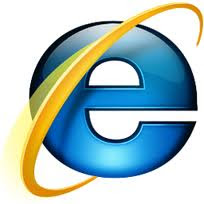
Internet was fundamentally broken in the way that only things which have been patched together could be :
Stay Up To Date
This is vitally important for Windows users, but it also has started to have more of an impact on Mac users too. If there’s a single thing that you can do to help the Internet as a whole, it is to use the latest version of your OS, updated software on that OS and to keep your virus definitions current in your scanner.
So many of the problems that we see, the vulnerabilites of the Internet, come from outdated software. If we could simply convince everyone to turn on automatic updating of their software, and to enable it to upgrade itself, numerous security holes would be closed.
Scan The System
Along the same lins as staying up to date, you need to have up-to-date antivirus and anti-malware scanners installed in your system. Granted, Mac and Linux users don’t have to worry quite so much about this, but Windows users, the
onus is on you
If we could get every computer user to have reliable antivirus and anti-malware protections installed, and get them to keep them up to date, we’d eliminate so many potential problems that it wouldn’t be worth the viurs-maker’s time to continue work on them.
Become the Future
I touched on this briefly in the piece about the broken Internet, and then more in depth when CloudFlare released its IPv6 gateway product, but it’s worth revisiting here — We have to stop living in the past.
Right now we’re living on an IPv4 system that is gasping its dying breaths. In order to move forward, we have to be on IPv6, but in order for hosts to justify the cost, we have to have content on that IPv6 network or else it’s going to be a barren Internet wasteland for anyone who transitions.
So you should find a way to make that IPv6 transition. CloudFlare offers one method, some ISPs are jumping onto the early move, as well. There will be other options as we move forward, and there are even software options being developed that can run on your own Web server. So, it’s more in-depth, but it’s vitally important to push this change forward.
Get Secure
So you don’t care if someone uses your WiFi connection, right? But what if they’re using it to spread problems? What if they’re enabling someone else to cause problems via your connection?
Wireless security is simple, so you should have it enabled. Many of the medium-quality an higher routers on the market offer guest browsing access to which you can freely give out the password and still keep the rest of your network secure. So don’t settle. Buckle down that insecure WiFi and stop having excuses.
HTTPS
It’s a matter of security. It’s a matter of making certain that your information stays your information. If a website offers HTTPS (and many more are, each day) then you should enable it. Twitter does, so do Google and Facebook. For many people on the Internet, that makes up the vast majority of their browsing day.
There’s one other step here, too. If you host a website, and you at any point ask for a user to submit any sort of information, make sure that you’re using a secure connection to do so. There’s hardly anything that I find more annoying on the Internet (except hipsters) than trying to look at something on a website, being asked to sign in, and then getting the insecure page warning.
I’m sure there are more, but these are the ones that came up to me off the top of my head. Beyond that, though, they’re shareable to your lesser-techie friends. So please, do share it with them and let’s start fixing our broken home.













